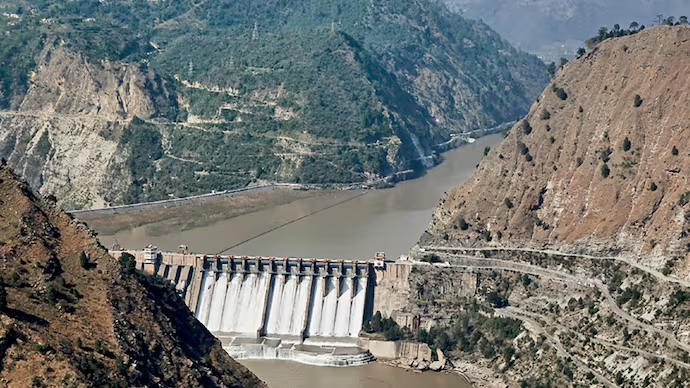Pakistan reportedly plans to target the Brahmaputra River as part of its water conflict strategy against India and is seeking China’s support in this escalating water dispute.

Cornered by the suspension of the Indus Water Treaty and reeling from India’s strikes on its major airbases, Pakistan is now grasping at straws—raising a fresh concern: what if China shuts off the Brahmaputra river flow?
According to an ANI report, Pakistan Prime Minister Shehbaz Sharif’s special assistant recently claimed that India has suspended the flow of the River Indus to Pakistan. He also warned that China could take similar action against India.
India is the upper riparian country in the Indus River basin, sharing the river system with Pakistan downstream. However, in the Brahmaputra basin, India is the lower riparian, with China controlling the upstream flow and holding a strategic advantage.
Amidst the ongoing tensions, a cryptic yet sharp comment from Victor Zhikai Gao, a senior Chinese policy advisor, has started gaining attention online: “Don’t do unto others what you don’t want done to you.”
India’s Firm Response
Addressing Pakistan’s recent “new scare narrative” about China’s control over the Brahmaputra River, Assam Chief Minister Himanta Biswa Sarma firmly stated, “The Brahmaputra is a river that grows in India, not shrinks.”
As the leader of one of the country’s most flood-affected states, Sarma didn’t just reject the claim—he dismantled it with detailed hydrological facts.
According to Sarma on X, China accounts for only about 30-35% of the Brahmaputra River’s total flow, mainly through glacial melt and limited rainfall in Tibet. The majority—approximately 65-70%—originates from heavy monsoon rains and major tributaries within India’s own borders.
He emphasized that the Brahmaputra is not a river India relies on upstream; rather, it is primarily a rain-fed river system within India that gains strength after entering Indian territory.
Sarma highlighted the stark difference in the Brahmaputra River’s flow at the India-China border compared to its volume in the Assam plains. While the river flows at approximately 2,000 to 3,000 cubic meters per second near the border, during the monsoon season, it surges dramatically to between 15,000 and 20,000 cubic meters per second in Assam.
He also noted that any decrease in water flow from China could potentially help India manage the frequent floods in Assam, a persistent problem that displaces hundreds of thousands of people and devastates their livelihoods each year.
Turning the tables on Pakistan, he asserted:
“After benefiting from 74 years of preferential water access under the Indus Waters Treaty, Pakistan now panics as India justly asserts its sovereign rights.”
He concluded with a powerful reminder:
“The Brahmaputra isn’t controlled by any one nation — it flows through the strength of our geography, the rhythm of our monsoon, and the depth of our civilizational resilience.”
While Biswa effectively countered Pakistan’s latest narrative, the bigger concern lies elsewhere.
China’s massive $137 billion dam project on the Brahmaputra River in Tibet poses a significant threat to India. Approved last year, this ambitious project is being constructed near the Indian border, at a deep gorge in the Himalayas where the river takes a dramatic U-turn into Arunachal Pradesh before flowing into Bangladesh.
The scale and location of this project have raised serious alarm in India, given the potential impact on water security and regional stability.
India has expressed serious concerns over China’s dam project, which not only gives Beijing control over the Brahmaputra River’s water flow but also poses a strategic threat. The scale of the dam raises fears that China could release excess water during times of conflict, potentially flooding Indian border areas. Following the project’s announcement, the Indian government formally conveyed its concerns to China in December last year.
India Plans Rs 1.5-Lakh Crore Mega Dam on Brahmaputra to Counter China’s Moves
India is planning a massive Rs 1.5-lakh crore hydropower project as a strategic response to China’s infrastructure activities along the Yarlung Zangbo (Brahmaputra) River. This ambitious dam, expected to have a staggering water storage capacity of 9.2 billion cubic metres (bcm), is to be built on the Siang River — the upper stream of the Brahmaputra in Arunachal Pradesh and known as Yarlung Zangbo in Tibet.
Table of Contents
According to a report by The Economic Times, the proposed site for this 465-meter-high project is Parong, a remote village in Arunachal Pradesh’s Siang district. Drilling equipment for pre-feasibility studies is likely to be deployed at the location soon.
This project marks a significant strategic and environmental development for the region, reflecting India’s intent to safeguard its water resources amid growing regional tensions.
This is the point where the Brahmaputra River makes a dramatic U-turn before entering Arunachal Pradesh. According to an official who spoke to The Economic Times in January, the estimated storage capacity of the Chinese dam is 5.5 billion cubic meters (bcm), compared to India’s 9.2 bcm. “Even if China were to release its entire water volume — effectively a ‘water bomb’ — our dam has the capacity to absorb it,” the official said.
He further explained that the river drops nearly 3 kilometers at the Great Bend before surging into Arunachal Pradesh. This steep descent gives China a natural advantage for hydroelectric power generation.
Once initiated, the Siang Upper Multipurpose Project will result in the submergence of vast stretches of land across more than 30 villages, including Parong, Sitang, Riga, Geku, and Dite Dime. This will require the relocation of affected residents to alternative hilltop settlements. Moreover, the entire area where the two dams are planned falls within a highly active seismic zone, raising serious safety concerns.
READ ALSO…….What are FPV drones, used by Ukraine to attack Russia?














 Categories
Categories








